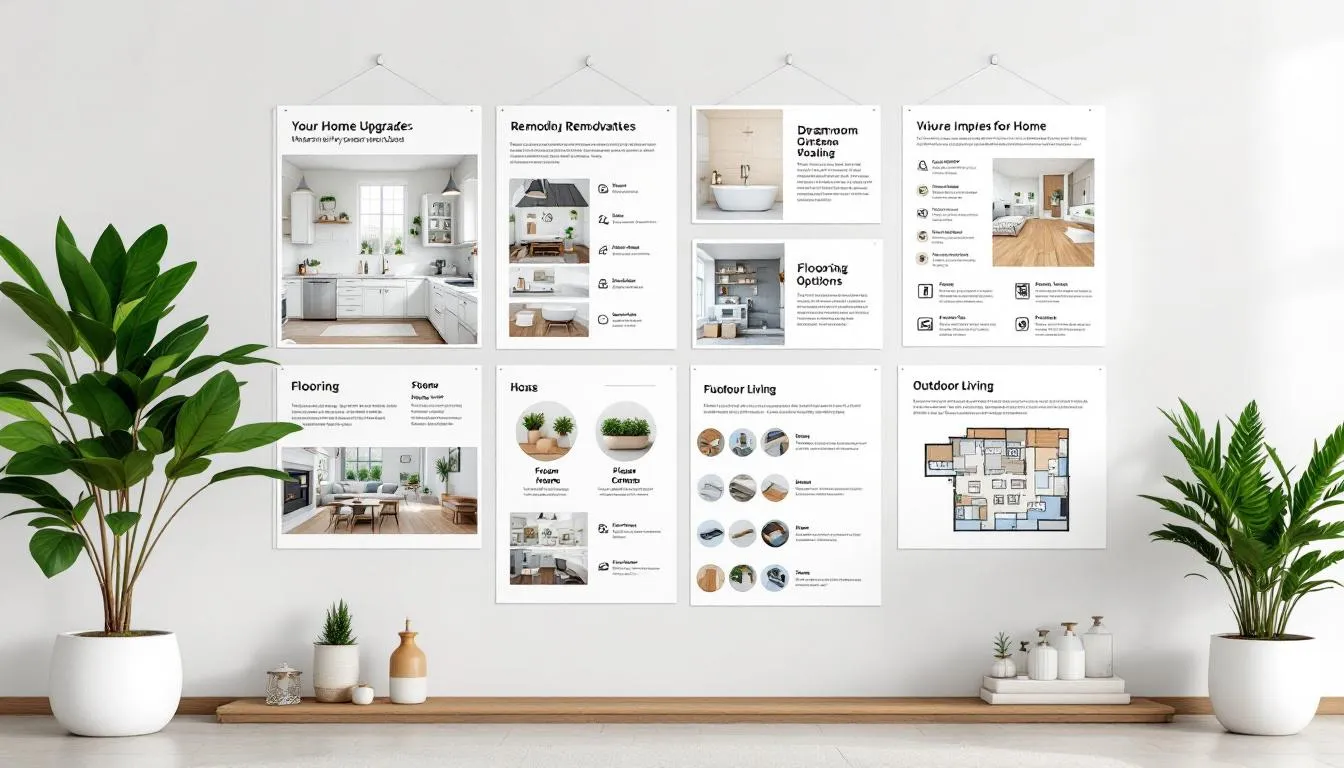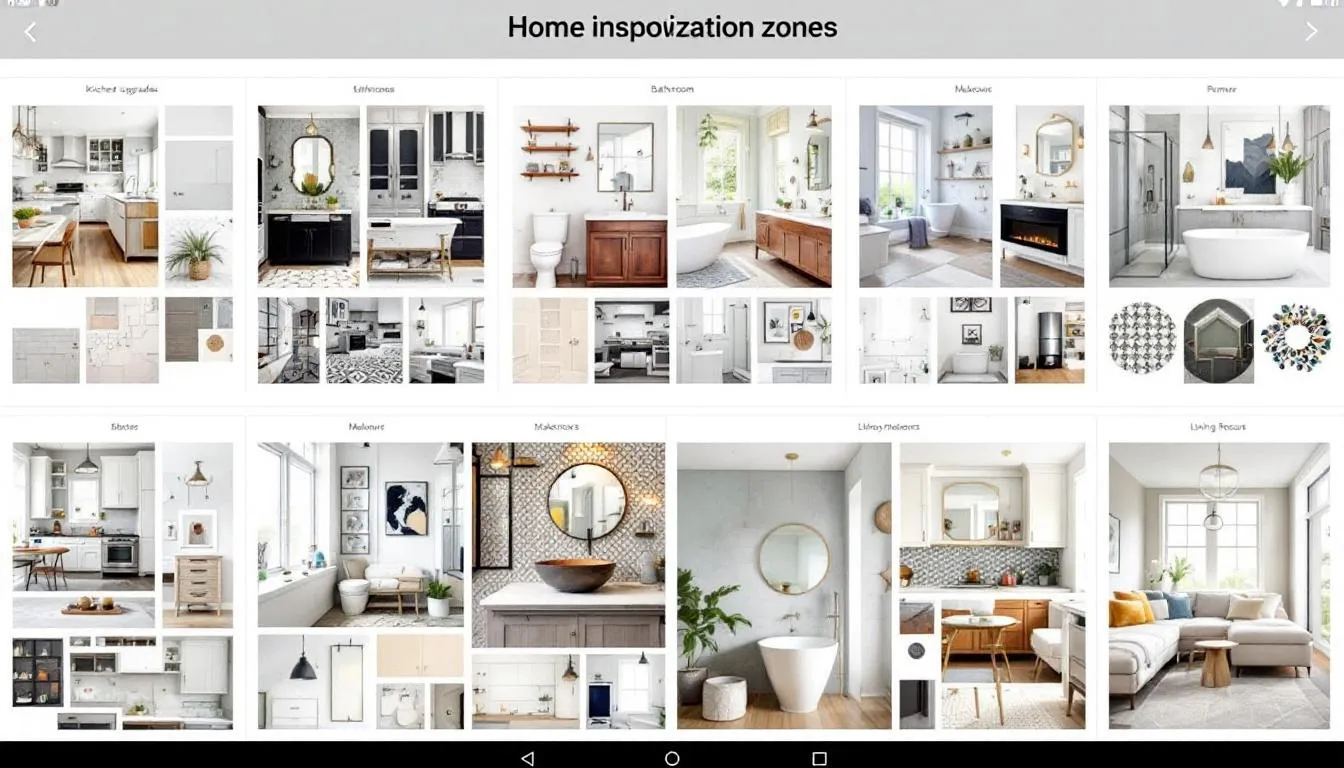When planning a remodel, here’s what to do before you call a contractor: you need to be prepared. This guide covers everything from setting clear goals and budgeting to understanding local regulations. By doing these things first, you can ensure your project runs smoothly once a contractor is involved.
Introduction to Remodeling
Remodeling your house is a significant undertaking, but with the right approach, it can transform your living space and add lasting value. Before diving into a remodeling project, it’s important to clarify your goals, set a realistic budget, and outline your desired timeline. These foundational steps will help you stay organized and focused throughout the process.
One of the most important steps is hiring a reputable contractor. Take the time to research local contractors thoroughly—look for professionals with a solid track record, proper insurance, and all necessary licenses. Reviewing their previous work and reading online reviews can give you confidence in your hiring decision. A good contractor will guide you through the remodeling process, help you avoid costly mistakes, and ensure your project is completed to your satisfaction.
A well-planned remodeling project not only enhances your home’s functionality and comfort but can also increase its market value. Whether you’re updating a kitchen, renovating a bathroom, or tackling a whole-house remodel, careful planning and the right team make all the difference.
Key Takeaways
- Clearly define remodeling goals to guide the design and planning process, ensuring alignment with personal objectives.
- Assess your budget thoroughly, accounting for all potential costs, and create a contingency fund for unexpected expenses.
- Research local regulations and obtain necessary permits early to avoid delays and ensure compliance with building codes.
Define Your Remodeling Goals

Defining your remodeling goals clearly is crucial for a successful home remodel. Knowing your objectives will guide every decision throughout the process. Are you aiming to gain additional living space or repurpose existing rooms to convert underutilized areas into functional spaces?
Creating new rooms like an office or extra bedroom, or incorporating outdoor spaces like patios or decks, are common motivations for home remodeling. These goals can dramatically influence the scope and design of your renovation project.
Before moving forward, make a comprehensive list of all the things you want to include or consider in your remodel. This ensures you don't overlook any features or changes that could be important to your overall vision.
Updating your home for style and energy efficiency is another common goal. Modernizing an older home can improve its aesthetic appeal, reduce energy costs, and enhance overall comfort.
Regardless of your specific goals, a clear focus will help you communicate effectively with designers and contractors, ensuring the final result matches your expectations and signs.
Assess Your Budget
After defining your goals, assess your budget:
- Setting a realistic budget is crucial to avoid financial stress and ensure the project’s success.
- Home renovation costs typically range from $10 to $60 per square foot.
- It’s essential to determine what you can afford by considering all potential expenses.
Your budget should account for costs like:
- Permits
- Building materials
- Labor
- Cosmetic touches
Be sure to calculate the overall cost of the project, including all potential expenses and contingencies, to avoid hidden charges and budget more accurately.
The average cost to remodel multiple rooms is around $52,000, but this can vary based on the scope of the project and materials chosen. Open communication about budget constraints with contractors can help set realistic expectations and manage costs effectively.
Proper planning and accurate quotes are vital to minimize unexpected costs in your business. If estimates exceed your budget, consider eliminating lower-priority elements to stay within financial limits.
It’s not just about the amount of money, but how wisely you decide to spend it. A well-planned budget helps make informed decisions and avoid financial pitfalls.
Research Local Regulations and Permits
Researching local regulations and permits before starting renovations can prevent costly delays and legal issues. Zoning laws may restrict the size and appearance of your renovations, so it’s essential to be aware of these rules from the outset.
Building permits ensure compliance with local building codes and safety standards. You or your contractor may need to pull permits from local authorities as part of the process. Since the approval process can take weeks or months, start it early. Inspections by local officials are often needed to ensure ongoing compliance.
Homes in historic districts may require additional approvals to maintain historical character. Understanding and adhering to local regulations helps avoid unnecessary headaches and keeps your project on track. Always check with your state's contractor licensing board to ensure your contractor is properly licensed and compliant with regulations.
Gather Design Inspiration

Gathering design inspiration is a fun part of the process. Collecting ideas early helps communicate your vision clearly during the remodeling project. Creating a mood board is an effective way to visualize ideas, allowing you to arrange samples and swatches to assess colors and textures.
A mood board enhances the design process by providing a tactile experience. Key elements include:
- Paint swatches
- Fabric samples
- Flooring options These create a comprehensive visual guide. Starting with a neutral base avoids influencing the color perception of your design elements.
Photographing the completed mood board helps document the design process and refine your overall vision. A well-thought-out design plan prepares you to discuss ideas with contractors, ensuring your remodel aligns with your aesthetic goals.
Evaluate the Condition of Your Home
Evaluating the current condition of your home is an important step before starting any remodeling project. Assessing the condition of your property helps protect your investment and can significantly impact your property value. This step highlights potential renovation challenges and ensures your plans are feasible. Check essential systems like plumbing, HVAC, and electrical work to ensure they function properly.
Identify spaces that are functional versus those that need improvement. This assessment guides renovation plans and helps prioritize areas needing the most attention. Consider future needs to ensure renovations meet long-term goals.
Key considerations include:
- Identifying functional spaces
- Recognizing spaces that need improvement
- Using the assessment to guide renovation plans
- Prioritizing areas that need the most attention
- Considering future needs to ensure renovations meet long-term goals
Thoroughly evaluating your home’s condition prepares you for determining how to tackle unexpected issues during the renovation, ultimately save time and money.
Create a Detailed Plan
Creating a detailed plan is crucial for any remodeling project. Establish a clear timeline, including desired start and completion dates. Prioritizing your goals helps determine which projects are most important, especially if considering a floor plan change. The most important step is to ensure that all aspects of the remodeling are well thought out.
Select the projects you want to prioritize and research the costs involved, gathering estimates for labor and materials to ensure an accurate budget. For instance, kitchen and bathroom remodels are often prioritized because they significantly impact both home value and daily functionality. A clear understanding of these elements helps you plan ahead and avoid unexpected costs.
Ensure your contract includes the following:
- Start date and end dates, outlining the project’s time frame.
- A requirement for written change orders to document alterations affecting costs.
- Clarified payment terms to protect homeowners in disputes related to project delays.
Build a Contingency Fund
A contingency fund:
- Typically amounts to 5% to 10% of the total project cost.
- Acts as a financial safety net for unexpected issues during renovation.
- Allows homeowners to address unforeseen expenses without compromising the project’s quality.
Common issues requiring contingency funds include hidden plumbing problems and unexpected structural repairs. Setting a savings goal is crucial for funding your renovation without relying on loans.
Including a contingency fund in your budget helps manage unexpected costs effectively, keeping your renovation on track and within budget.
Communication and Updates
Clear and consistent communication is the backbone of any successful remodeling project. From the very beginning, establish a communication plan with your contractor to ensure everyone is on the same page. Decide how you’ll exchange updates—whether through regular meetings, phone calls, emails, or project management apps.
Set expectations for how often you’ll receive progress reports and discuss how any unexpected issues or changes will be communicated. Most contractors appreciate when homeowners are engaged and responsive, as it helps keep the project moving smoothly. Don’t hesitate to ask questions or request clarification if something isn’t clear—open dialogue helps prevent misunderstandings and keeps your remodeling project on track.
By prioritizing communication, you’ll be better equipped to handle any challenges that arise and ensure your vision for the project is realized.
Vet Potential Contractors

Vetting potential local contractors is critical to ensuring the success of your renovation project. Here are some steps to follow:
- Request their license number.
- Ask for proof of insurance. It is important to verify that the contractor has liability insurance to protect you from potential damages or injuries during the project.
- Review examples of past work.
- Seek referrals from friends and family for reputable contractors and general contractor options. Consider hiring a good contractor who meets all your criteria and request references from previous clients. Before anyone is officially hired for your project, thoroughly vet their background, credentials, and reputation. Additionally, check with the state’s contractor licensing board to ensure compliance. You can also find contractors who have a proven track record through a vetting process.
To assess a contractor’s suitability, consider the following steps:
- Check the contractor’s history for any violations or lawsuits to assess their reputation.
- Engage with contractors to gauge their management style and workmanship during virtual site visits. Review the contractor's previous jobs to evaluate their experience and reliability.
- If something feels off about a contractor, trust your instincts and reconsider your options. Behaviors such as evasiveness, lack of documentation, or inconsistent information can be a red flag indicating potential issues.
Ensure the warranty terms clearly outline what is covered, including labor and materials. Trustworthy contractors provide documentation of warranties and a clear sign to verify resolving claims when the contractor responds. It is essential to review contracts carefully to ensure all terms, payment schedules, warranties, scope changes, and cancellation policies are clearly outlined and understood.
For additional research, use reputable home improvement websites to find contractors, read reviews, and verify credentials before making your decision.
Set Up a Payment Schedule
A clear payment schedule ensures both parties meet their obligations, which is standard practice. Pay typically includes an upfront deposit, not exceeding 10% of the total project cost. Payments should be linked to specific milestones, like the completion of the foundation or rough plumbing.
Withhold the final payment, often up to one-third of the total cost, until the project is completed to ensure the contractor returns for any unfinished work. This structure protects your investment and ensures smooth project progress.
Plan for Living Arrangements

Living through a remodel can be challenging, so plan for living arrangements. If remodeling your entire house, consider moving out completely. Setting clear expectations and having a solid action plan is crucial.
To manage a construction or renovation project effectively:
- Establish boundaries with your construction team to minimize disruptions.
- Take safety measures to keep children and pets away from construction areas during renovations. Make sure your insurance policy covers potential injuries or damages caused by a family member during the remodeling process.
- Plan for a temporary kitchen setup to help manage daily cooking during a kitchen remodel.
Consider alternative housing if staying home becomes unbearable during significant home renovations for a homeowner. Proper planning reduces stress and ensures enough time for a smoother renovation process.
Prepare for Cleanup
Preparation for cleanup is often overlooked but crucial. Rent cutting-edge air scrubbers to improve air quality during the renovation. HEPA vacuums effectively trap smaller particles released during renovations.
Creating barriers like heavy-duty tarps helps contain dust and debris. A systematic approach to cleaning after renovations does the job of restoring the home to its original condition. Completing the cleanup process is an essential final step in any renovation project, ensuring the work is truly finished and the space is ready for use.
Warranties and Support
When your remodeling project is complete, your relationship with your contractor shouldn’t end there. A reputable contractor will stand behind their work by offering clear warranties on both labor and building materials. Before signing any contract, review the warranty terms carefully—make sure you understand what is covered, for how long, and the process for making a claim if issues arise.
Ask your contractor to provide all warranty documentation in writing, and keep these records in a safe place for future reference. Good contractors are committed to customer satisfaction and will respond promptly if you need support after the project is finished. This ongoing support gives you peace of mind, knowing your investment is protected and any problems will be addressed quickly.
Avoiding Common Mistakes
Even the most well-intentioned homeowners can fall into common traps during a home renovation. To protect your investment and ensure a smooth remodeling process, keep these tips in mind:
- Don’t skip the vetting process: Always verify your contractor’s credentials, insurance, and references. Failing to do so can lead to costly mistakes and unfinished work.
- Avoid underestimating the budget: Set a realistic budget and include a contingency fund for unexpected costs. Many contractors recommend planning for at least 10% over your initial estimate to cover surprises.
- Don’t ignore local regulations: Make sure all necessary permits are pulled and that your project complies with local building codes. Skipping this step can result in fines or having to redo work.
- Communicate clearly: Misunderstandings about project scope, payment schedules, or timelines can derail your renovation. Get everything in writing and review your contract carefully before signing.
- Plan ahead for disruptions: Remodeling can be messy and disruptive. Prepare your family and living space in advance to minimize stress.
By learning from these common mistakes and planning ahead, you’ll be well on your way to a successful home remodel that meets your needs and exceeds your expectations.
Summary
In summary, planning a remodel involves several critical steps to ensure a smooth and successful renovation. Defining your remodeling goals, assessing your budget, researching local regulations, and gathering design inspiration are foundational steps. Evaluating your home’s condition, creating a detailed plan, building a contingency fund, and vetting potential contractors follow closely.
Setting up a payment schedule, planning for living arrangements, and preparing for cleanup are final steps that ensure the project is completed efficiently and to your satisfaction. With careful planning and attention to detail, your dream home is within reach.
Remember, the key to a successful renovation is preparation. By following these steps, you’ll be well on your way to creating a home that meets your needs and exceeds your expectations.
Frequently Asked Questions
Why is it important to define remodeling goals before starting a project?
It is crucial to define remodeling goals as they guide decision-making and ensure the final outcome aligns with your expectations. This clarity leads to a more satisfying project result.
How much should I budget for a home renovation?
You should budget between $10 to $60 per square foot for home renovations, with an average total of around $52,000 for remodeling multiple rooms. This helps ensure you cover typical expenses effectively.
What are some common issues that may require a contingency fund?
Common issues that may require a contingency fund include hidden plumbing problems and unexpected structural repairs. It's essential to be prepared for these unforeseen expenses to protect your finances.
How can I find reputable contractors for my renovation project?
To find reputable contractors for your renovation project, seek referrals from friends and family, verify their history for violations, and ask for their license number, proof of insurance, and examples of past work. This approach will help ensure you hire a qualified professional.
What should be included in a payment schedule for a renovation project?
A payment schedule for a renovation project should include an upfront deposit, milestone-related payments, and a final payment that is withheld until the project is fully completed. This structure ensures clarity and accountability throughout the project.

